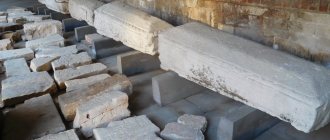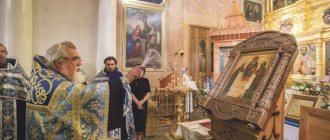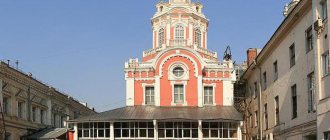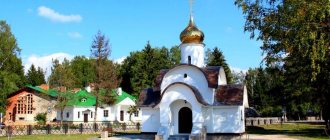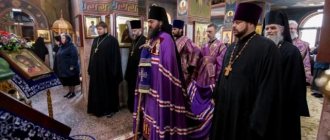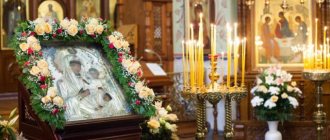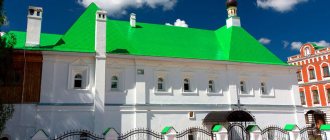Mir
Estonia Ida-Viru County Pükhtitsa Assumption Convent Map is loading...
{"format":"leaflet","minzoom":false,"maxzoom":false,"limit":50,"offset":0,"link":"all","sort":[""], "order":[],"headers":"show","mainlabel":"","intro":"","outro":"","searchlabel":"\u2026 \u0441\u043b\u0435\ u0434\u0443\u044e\u0449\u0438\u0435 \u0440\u0435\u0437\u0443\u043b\u044c\u0442\u0430\u0442\u044b","default":"","import-annotation":false,"width ":"auto","height":"350px","centre":{"text":"","title":"""link":"""lat":59.19907400000000308182279695756733417510986328125,"lon": 27.53541799999999994952304405160248279571533203125,"icon":""},"title":"","label":"","icon":"","lines":[],"polygons":[],"circles":[ ],"rectangles":[],"copycoords":false,"static":false,"zoom":8,"defzoom":14,"layers":["OpenStreetMap"],"image layers":[] ,"overlays":[],"resizable":false,"fullscreen":true,"scrollwheelzoom":true,"cluster":false,"clustermaxzoom":9,"clusterzoomonclick":true,"clustermaxradius":80, "clusterspiderfy":true,"geojson":"","clicktarget":"","showtitle":true,"hidenamespace":false,"template":"","userparam":"","activeicon": "","pagelabel":false,"ajaxcoordproperty":"","ajaxquery":"","locations":[{"text":"\u003Cb\u003E\u003Ca href=\"/palomnik/%D0% 9F%D1%8E%D1%85%D1%82%D0%B8%D1%86%D0%BA%D0%B8%D0%B9_%D0%A3%D1%81%D0%BF%D0%B5% D0%BD%D1%81%D0%BA%D0%B8%D0%B9_%D0%B6%D0%B5%D0%BD%D1%81%D0%BA%D0%B8%D0%B9_%D0% BC%D0%BE%D0%BD%D0%B0%D1%81%D1%82%D1%8B%D1%80%D1%8C\» title=\»\u041f\u044e\u0445\u0442\u0438\ u0446\u043a\u0438\u0439 \u0423\u0441\u043f\u0435\u043d\u0441\u043a\u0438\u0439 \u0436\u0435\u043d\u0441\u043a\u0438\u0439 \u 043c\u043e\u043d\u0430\u0441\ u0442\u044b\u0440\u044c\»\u003E\u041f\u044e\u0445\u0442\u0438\u0446\u043a\u0438\u0439 \u0423\u0441\u043f\u0435\u043d\u0441\u 043a\u0438\u0439\u0436\ u0435\u043d\u0441\u043a\u0438\u0439 \u043c\u043e\u043d\u0430\u0441\u0442\u044b\u0440\u044c\u003C/a\u003E\u003C/b\u003E\u003Ch r /\u003E\u003Ca href= \"/palomnik/%D0%A1%D0%B2%D0%BE%D0%B9%D1%81%D1%82%D0%B2%D0%BE:%D0%90%D0%BD%D0%BD %D0%BE%D1%82%D0%B0%D1%86%D0%B8%D1%8F\" title=\"\u0421\u0432\u043e\u0439\u0441\u0442\u0432\u043e:\u0410\ u043d\u043d\u043e\u0442\u0430\u0446\u0438\u044f\»\u003E\u0410\u043d\u043d\u043e\u0442\u0430\u0446\u0438\u044f\u003C/a\u003E: \u0436\u0435\u043d \u0441\u043a\u0438\u0439 \u0441\u0442\u0430\u0432\u0440\u043e\u043f\u0438\u0433\u0438\u0430\u043b\u044c\u043d\u044b\u0439\ u043c\u043e\u043d\u0430\u0441 \u0442\u044b\u0440\u044c \u0420\u0443\u0441\u0441\u043a\u043e\u0439 \u041f\u0440\u0430\u0432\u043e\u0441\u043b\u0430\u0432\ u043d\u043e\u0439\u0426\u0435 \u0440\u043a\u0432\u0438, \u043e\u0441\u043d\u043e\u0432\u0430\u043d \u0432 1891 \u0433\u043e\u0434\u0443, \u043d\u0438\u04 3a\u043e\u0433\u0434\u0430\ u043d\u0435 \u0437\u0430\u043a\u0440\u044b\u0432\u0430\u043b\u0441\u044f","title":"\u041f\u044e\u0445\u0442\u0438\u0446\u043a\u04 38\u0439\u0423 \u0441\u043f\u0435\u043d\u0441\u043a\u0438\u0439 \u0436\u0435\u043d\u0441\u043a\u0438\u0439 \u043c\u043e\u043d\u0430\u0441\ u0442\u044b\u0440\u044c", "link":"","lat":59.19907400000000308182279695756733417510986328125,"lon":27.53541799999999994952304405160248279571533203125,"icon":"" }],"imageLayers":[]}
59.19921; 27.535537
Estonia, Ida-Viru County, Alutaguse parish, Kuremäe village, Pühtitsa Klooster, 12
Ida-Viru County
Estonia
Pyukhtitsa Assumption Monastery
- female stauropegial monastery of the Russian Orthodox Church, founded in 1891, never closed, located in the village of Kuremäe in the Illuka volost (Ida-Viru county of Estonia). Pühtitsa means “holy place” in Estonian. The Estonian name of the monastery is Pühtitsa Jumalaema Uinumise naisklooster.
History[edit]
Before 1893[edit]
The history of the creation of the monastery is connected with the image of the Dormition of the Mother of God: according to legend, in the area where the monastery is now located, the Mother of God appeared to local residents, and at the site of her appearance the Assumption Icon of the Mother of God was found. In the 16th century, local residents built a chapel of the icon of the Mother of God next to the oak tree where the icon was found.
Thanks to the persistent and unrelenting energy of the Governor of Estonia, Prince S.V. Shakhovsky and the care of Princess Elizaveta Dmitrievna Shakhovskaya, in 1885 the Pukhtitsa Orthodox parish was opened on the Mother of God Mountain and a temple was built for the previously acquired icon. Later, after the icon was transferred to the cathedral, this temple became a cemetery and was re-consecrated in the name of St. Nicholas and St. Arseny the Great. In 1887, on the initiative of Prince S.V. Shakhovsky, a branch of the Orthodox Baltic Brotherhood of Christ the Savior and the Protection of the Mother of God was established under the chairmanship of the prince’s wife, Princess Elizaveta Dmitrievna Shakhovskaya, and charitable institutions were opened in the borough of Ievve: a school, a hospital with a pharmacy and an emergency room for housing outpatients, orphanage, handicrafts. However, the main goal of the brotherhood was to establish a convent on the Mother of God Mountain in Pyukhtitsa, where the charitable institutions opened in Ievve (Jykhvi) could eventually be moved.
Princess E. D. Shakhovskaya personally addressed many people with requests and letters regarding the organization of Orthodoxy in Estonia. In particular, in 1888, the princess corresponded with the holy righteous John of Kronstadt, who sent her his blessing and 200 rubles for the Pukhtitsa monastery and for educational purposes. Reply to Elizaveta Dmitrievna from Father John dated September 26, 1888: “Your Excellency, dear Princess Elizabeth! I received your letter and read it with heartfelt sympathy. May the Lord reward you for your possible assistance in establishing Orthodoxy in the region where the Lord destined you to live and act for the good of the people and for the glory of God... You ask God for a miracle for the successful spread of Orthodoxy and for helping the poor Estonians and Latvians. God is the God of miracles at all times... He has created and will create miracles in your brotherhood and will confirm your work to the end. I have the honor to send 200 rubles for the needs of the society. I sincerely bow to you, princess. Your humble servant and pilgrim is Archpriest John Sergiev.”
This is what Princess Shakhovskaya writes to lawyer F.N. Plevako: “We, Russians, Orthodox, must meet our Estonian brothers halfway and give them what a person cannot live without on earth: church, school, care for the sick... and what do they, being poor, they cannot give to themselves. ... First of all, the figures reported by the parish priests indicate the following needs: 1) 88 old and infirm need to be looked after; 2) people who are deprived of medical care in Estonia must be treated everywhere; 3) it is necessary to create a shelter for orphans (22 orphans, 84 without one of the parents) and a model school for Estonian Orthodox girls, who could become school teachers.”
On April 29, 1891, the Highest permission was given to alienate the Mother of God Mountain, together with the unfinished Lutheran church on it, into the full and exclusive possession of the Orthodox Church.
On August 15, 1891, Bishop of Riga Arseny (Bryantsev) inaugurated the Pukhtitsa Assumption women's community. By this day, through the care of Princess E.D. Shakhovskaya, a new wooden house to house the sisters was completed on Bogoroditskaya Mountain. On the same day, Alexander III donated rich priestly vestments to the Pukhtitsa church. In the same year, a shelter for children of poor parents was opened in the community, and the following year, patients began to be received in a hospital set up at the community. By the end of 1891, the community consisted of 21 novices, 22 orphanage students and 2 sisters of mercy.
The influx of pilgrims to the Bogoroditskaya, or Holy Mountain, began to increase day by day, and this served as a reason for the brotherhood, with Princess E. D. Shakhovskaya at its head, to initiate a new petition to transform the community into a monastery, which was respected by the Holy Synod. The Pyukhtitsa Assumption women's community, as determined by the Holy Synod of October 23, 1893, was transformed into a monastery.
1894-1980[edit]
The ensemble of monastery buildings was designed by the architect M. T. Preobrazhensky. In addition to the cell buildings, it includes the Refectory Church of Sts. right Simeon the God-Receiver and Anna the Prophetess (1895), a fence with the Holy Gate.
One of the benefactors of the monastery, the Russian state, public and cultural figure, governor of Estonia, Prince Sergei Vladimirovich Shakhovskoy, is buried here. His widow, Princess Elizaveta Dmitrievna Shakhovskaya, erected a temple in the name of St. Sergius of Radonezh (1895) with the tomb of the prince. After 45 years, she herself found her last refuge here. The main Cathedral of the Assumption of the Blessed Virgin Mary was built later, in 1908-1910 (architect A. A. Poleshchuk), on the site of the original small church.
In the 1920-1930s, the monastery was located on the territory of independent Estonia. After World War II, the USSR authorities were forced to recognize the monasteries’ right to exist. In the first post-war years, Metropolitan Gregory (Chukov) of Leningrad and Novgorod provided assistance to the monastery. Since 1961, Bishop (since 1968 - Metropolitan) of Tallinn and Estonian Alexy (Ridiger) showed great care for the Pukhtitsa monastery. On his initiative, a house was built in the monastery for “representative purposes” with the house church of St. Alexia and VMC. Barbarians (1986). After the election of Metropolitan Alexy as Patriarch of Moscow and All Rus' and the secondary declaration of independence of Estonia, the monastery received stauropegial status.
1990–present[edit]
In 1989, the courtyard of the Pyukhtitsa Monastery was opened in the city of Kogalym.
The baptismal temple of John the Baptist and Hieromartyr Isidore Yuryevsky was built in the monastery (1990). In Moscow, at the Church of St. Nicholas the Wonderworker in Zvonary, a courtyard of the Pyukhtitsa Monastery has been opened. In 2006, the remains of Archbishop of Narva Eusebius (Grozdov) were reburied in the monastery.
Currently (2012) there are about 120 nuns and novices in the monastery.
History of the Pyukhtinsky Convent
The history of the Pyukhtinsky Monastery is the history of people’s struggle for the right to believe in what they consider necessary to believe and want to believe.
As already mentioned, the Pükhta monastery stands on Estonian soil. In ancient times, a major trade route ran between the Estonian, Novgorod and Pskov lands here near Crane Mountain.
It was then that Russian peasants began to occupy these places. They settled here and built their churches. Did you know that: when the expansion of the Crusaders began in the 13th century, the Catholic faith began to be forcibly imposed on people. Those who did not want to change the Orthodox faith to Lutheranism suffered terrible persecution. People were captured, forced to take communion, and those who continued to resist were tortured and executed.
Temples, churches and even chapels visited by Orthodox believers were destroyed and burned to the ground. Therefore, there were many martyrs on this earth for Orthodox Christianity.
The Monk Isidore Pelusiot lived in the 4th-5th centuries. Originally from Alexandria. He grew up among pious Christians. He was related to Theophilus, Archbishop of Alexandria, and his successor Saint Cyril
So at the beginning of the 15th century, on the Omozhva River, near ancient Yuryev, a terrible murder occurred: the presbyter of the St. Nicholas Church Isidore and 72 other people who were parishioners of this church were arrested during the blessing of water in the river, then they were kept in prison for two days, were subjected to the most terrible tortures. Afterwards they were drowned under the ice in the same river Omozhva, in the same Jordan, which they built to go out on the feast of the Epiphany.
We are sure that you will be interested in the article about the statue of Christ the Redeemer in Rio de Janeiro.
Links[edit]
- Cooperation in the Pukhtitsa Monastery
- Estonian Orthodox Church
- Pyukhtitsa in Kuremäe. VKontakte page
- Pyukhtitsa Stavropegial Holy Dormition Convent
- Unfortunately, very few people now go to the monastery
- Pukhtitsky Assumption Convent in Estonia
- Pyukhtitsa Monastery
- Pyukhtitsky Assumption Stauropegial Convent. Estonia
- Estonia. Pyukhtitsa Orthodox Convent
- Pyukhtitsky Assumption Convent
- Pyukhtitsa Monastery: Three steps to the Kingdom of Heaven
- Pilgrimage trip to the Pukhtitsky Assumption Convent
- Pyukhtitsky Assumption Convent
How to get there on your own
The exact address of the Pukhtitsa Monastery is Ida-Viru County, Illuka parish, Kuremäe village, how to get to it depends on the place of departure:
- from Tallinn by bus to the station. Jõhvi;
- from Moscow by rail “Moscow – Tallinn” to the station. Jõhvi;
- from St. Petersburg by bus or train to the same station.
In the future, from Jõhvi station you can take bus route No. 116 or taxi services. The duration of the bus trip is about 3 hours.
Pilgrims who wish to have an invitation document for visa processing can submit an application to the monastery’s email address, providing the necessary information about themselves:
- the surname and first name (according to the international passport) must be written in Latin font;
- the date of birth is indicated (format dd.mm.yyyy);
- the series and number of the international passport are provided;
- the desired time and duration of the visit are prescribed;
- Some information is provided, including where the person lives, whether he has already been to the monastery, and the purpose of the visit.
An invitation will be sent within a week.
Pilgrimage to the Pyukhtinsky Holy Dormition Convent
Despite the fact that the monastery is listed as a women's monastery, both women and men can make a pilgrimage there and pray.
This is interesting: the important point is that everyone who comes to the service in the Assumption Cathedral is allowed. You can also undergo baptism in the Baptismal Church.
You can go purposefully, or you can come just like that.
Regardless of how you get there, you need to meet several conditions:
- firstly, behave decently and quietly;
- and secondly, there is a dress code for women, namely a skirt long below the knees and a scarf covering the head, there is no other way.
If you are traveling specifically to the Pukhtitsky Monastery, then you will need to send a letter to this address, where you should indicate your personal data.
It is important to know: in the mail you need to write down your full name, date of birth, passport details, city where you live, and the consular department where you can apply for a visa. Then you will receive an invitation to come to the monastery.
Official information about the monastery in Puhtitsa can be found on the website - https://puhtitsa.ee/.
In Moscow there is a courtyard of the Pyukhtitsky Monastery on the street. Rozhdestvenka, 15/8. Official website - https://nikolazvonary.moseparh.ru/.
If you come to the monastery, then accommodation and food will be absolutely free for you, but if you want to leave a donation, it will be accepted with gratitude.
During the pilgrimage you will have plenty to do, there are excursions to the museum, around the territory and to the holy spring. You can also purchase products that the nuns created with their own hands.
